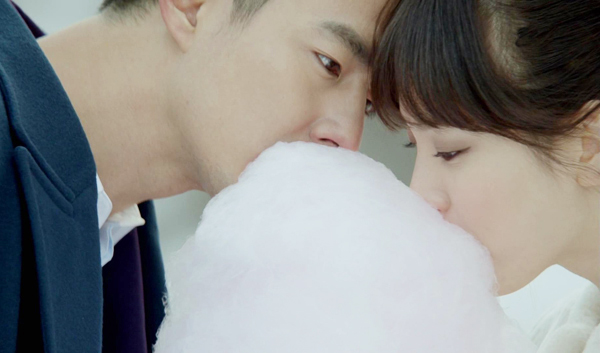‘Baramibunda’ ready for its close-up

The ultra close-ups and flawless images presented in SBS drama “Baramibunda” (“Wind is Blowing”) are created with techniques used in films or television commercials. Provided by the network
It’s the work of famous duo No Hee-kyeong and Kim Kyu-tae, who respectively wrote and produced JTBC’s “Padam Padam” last year.
Their signature approach to portraying a love story is also evident in the new show, which is at the top of the ratings for the so-called “golden hour” of 10 p.m.
While leading stars Song Hye-gyo and Zo In-sung are veterans known for their engaging performances, it is in fact their flawless faces in “Baramibunda” that are drawing attention.
In particular, Song, who plays a visually impaired heir to great wealth, has no wrinkles, blemishes or even pores visible on the ultra high-definition broadcast.
The JoongAng Ilbo talked to the production crew to find out their secrets, and the flawless faces aren’t due to skin treatments but rather camera techniques often used for films and television commercials.
“To help viewers better understand the characters’ emotions, I use ultra close-up shots,” Kim said. Koreans are already familiar with the plot of “Baramibunda,” a Japanese drama remade into a Korean film. So the producer is seeking to differentiate the show with exceptional visual techniques that accentuate even the smallest movement in actors’ faces or the twinkle in their eyes.
In the ultra close-ups, actors’ faces occupy the whole screen - a technique unique for Korean soap operas that usually resort to medium close-up or bust shots.
Scenes where Song puts on lipstick or walks into a cold river are shot like commercials, showing viewers very close shots of the stars in action.
This technique is popular in the advertising world for increasing viewer engagement.
“In term of visual arts, I wanted to break away from the standard set by existing dramas,” said Kim Cheon-seok, the visual director.
“I did away with any shots that sat in the middle [between close-up and full shot]. Also thanks to Song’s and Zo’s skill at expressing emotions through their eyes, I often end up zooming in more than I originally intend.”
To produce such detailed shots, the production crew uses high-definition ALEXA Plus cameras that cost hundreds of millions of won. They are known for their rich color and high-speed cinematography.
Post-production correction is another technique employed by the crew. Filming started back in November, so when the first episode aired, eight were already taped. This leaves time for correction, though it’s still tedious work.
At 29 images a second, each 62-minute episode is made of hundreds of thousands of images - all of which may need correction.
The set of “Baramibunda” also employs twice as much lighting equipment as do other dramas. At the set in Icheon, Gyeonggi, the crew must use a 300 kilowatt generator to power all the lights - a capacity three to six times larger than that of the typical generator used.
Lighting director Park Hwan has been working with the visual director for over 20 years, so their relationship is as close as the one between the writer and producer.
“It’s both my and Kim’s philosophy that the actress should look beautiful even when she is wailing,” Park said. “We use all sorts of camera lenses to create such sensuous imagery.”
By Han Eun-hwa [hkim@joongang.co.kr]










with the Korea JoongAng Daily
To write comments, please log in to one of the accounts.
Standards Board Policy (0/250자)